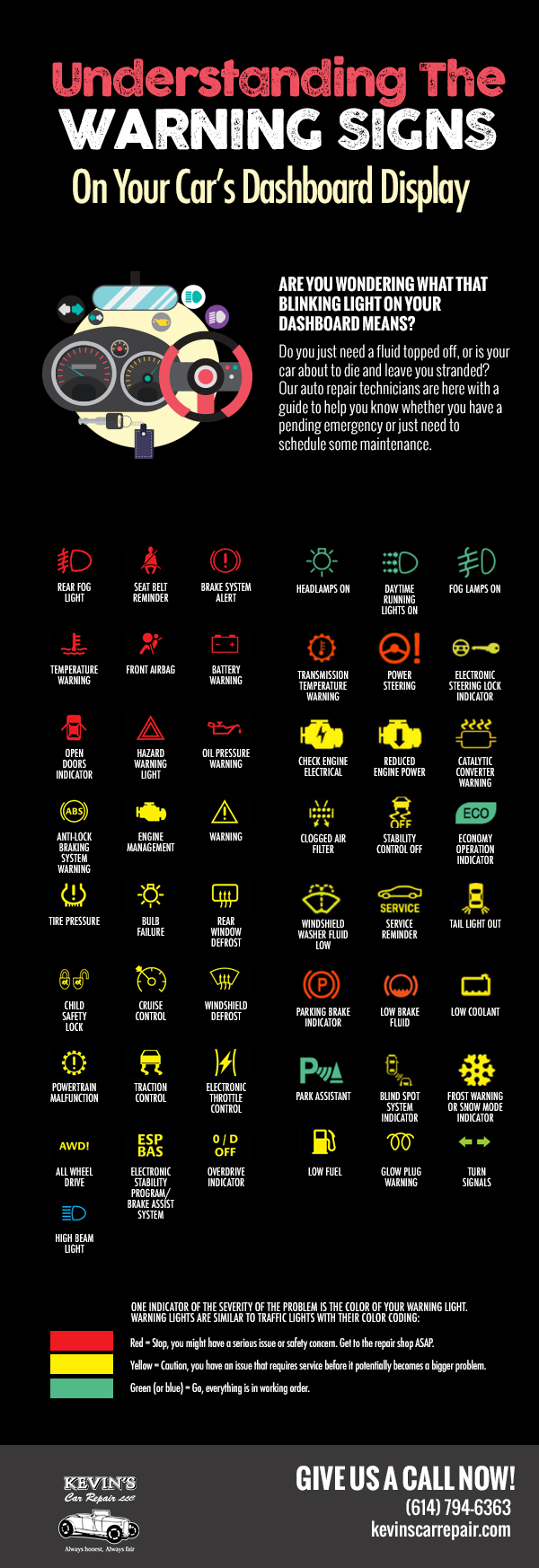Analyzing Your Automobile'S Alert Lights: Their True Implications
Analyzing Your Automobile'S Alert Lights: Their True Implications
Blog Article
Web Content Writer-Hartley Torres
When you're behind the wheel, those radiant caution lights on your control panel can be a bit puzzling. Do you understand what they're attempting to inform you concerning your auto's health and wellness? Understanding the significance of these lights is important for your security and the longevity of your automobile. So, luxury auto detailing among those lights turns up, wouldn't you intend to decode its message properly and take the necessary steps to resolve it?
Common Warning Lights and Interpretations
Determine typical warning lights in your cars and truck and recognize their definitions to make sure secure driving.
One of the most normal caution lights consist of the check engine light, which indicates problems with the engine or discharges system. If this light begins, it's important to have your lorry inspected without delay.
The oil stress warning light suggests reduced oil stress, calling for instant focus to prevent engine damage.
A flashing battery light could suggest a damaged charging system, potentially leaving you stranded if not attended to.
The tire stress monitoring system (TPMS) light informs you to reduced tire pressure, impacting car stability and fuel effectiveness. Ignoring this might cause dangerous driving conditions.
The abdominal muscle light shows an issue with the anti-lock stopping system, endangering your ability to quit quickly in emergencies.
Last but not least, the coolant temperature level alerting light warns of engine getting too hot, which can lead to severe damage if not solved quickly.
Comprehending paint correction auckland will certainly help you deal with problems without delay and keep risk-free driving conditions.
Relevance of Prompt Interest
Understanding the usual warning lights in your car is only the first step; the importance of promptly resolving these cautions can not be emphasized sufficient to ensure your security when traveling.
When a warning light illuminates on your control panel, it's your automobile's way of communicating a possible issue that needs focus. Neglecting these warnings can lead to much more extreme problems in the future, jeopardizing your security and possibly costing you much more out of commission.
Motivate focus to cautioning lights can stop breakdowns and crashes. As an example, a flashing check engine light can indicate a misfire that, if left neglected, can cause damages to the catalytic converter. Resolving this quickly can save you from a pricey repair service.
Likewise, a brake system warning light might signal reduced brake liquid or worn brake pads, critical components for your safety when driving.
Do It Yourself Troubleshooting Tips
If you notice a warning light on your dashboard, there are a few do it yourself troubleshooting pointers you can try prior to seeking expert assistance.
The initial step is to consult your auto's handbook to recognize what the details warning light suggests. Occasionally the concern can be as simple as a loosened gas cap triggering the check engine light. Tightening the gas cap might resolve the issue.
An additional common concern is a low battery, which can set off numerous advising lights. Examining the battery connections for rust and ensuring they're safe might repair the trouble.
If a warning light continues, you can try resetting it by separating the vehicle's battery for a couple of minutes and after that reconnecting it. Furthermore, inspecting your lorry's fluid levels, such as oil, coolant, and brake fluid, can help repair advising lights associated with these systems.
Verdict
In conclusion, comprehending your automobile's caution lights is vital for maintaining your automobile running efficiently and safely. By without delay dealing with these alerts and understanding what they mean, you can stay clear of expensive fixings and possible malfunctions.
Keep in mind to consult your car's handbook for specific information on each warning light and do something about it appropriately to ensure a trouble-free driving experience.
Remain informed, remain secure when driving!
